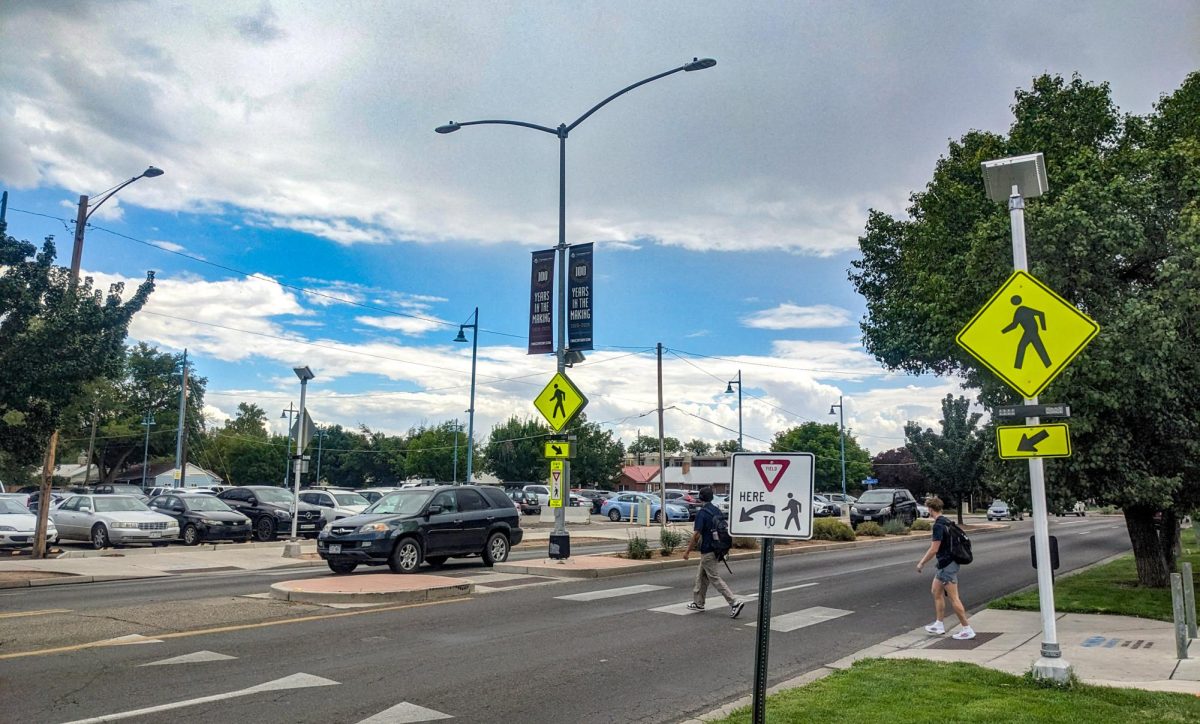A library is a necessity for any college student. Fitted with food options, coffee, study rooms, printers and helpful librarians, there’s nothing more that a student could need.
Tomlinson Library has a long and rich history, dating all the way back to when Colorado Mesa University (CMU) opened as a junior college in 1925. However, it wasn’t nearly as luxurious as the current building is today.
“The very first library was just a room in the building downtown, where the college started in the 1920s,” CMU’s Special Collections and Archive Librarian Amber D’Ambrosio said.
In 1933, the library was moved onto the college campus and occupied a single room within the original Houston Hall building.
“Then they built Lowell Heiny, and it was both a library and an administration building. The administration was on the ground floor and the rest of it was the library. They built that in the late 1960s, but then in the 1970s, we became a four-year institution. At that point, there is a higher expectation for the amount of books and the kinds of books you have available for a bachelor’s degree-granting institution, versus a two-year institution,” D’Ambrosio said. “It became clear that Lowell Heiny was not going to be big enough to accommodate as many books as they needed. At that point, they started planning tentatively to build another library building.”
The space in which Tomlinson Library was built is the location of the original Mary Rait Hall, which was a women’s-only dormitory. Over time, it turned into faculty offices. When CMU became a four-year institution, they made the decision to demolish the old Mary Rait building and begin building Tomlinson Library, which was originally going to be called the Mesa College Resource Center.
In 1986, Tomlinson Library officially opened its doors. It was named after former CMU President John U. Tomlinson after his dedication to library studies. However, this was only the start of Tomlinson’s evolution. Between the late 90s and the early 2000s, they began reimagining the space to focus more on students.
“The older way of thinking about libraries is that you want to protect the material, so you don’t want to have food and drink in the library. That’s shifted as things have gotten more digital, so now most of the space is for students, and then we have all these computers and a limited number of books,” D’Ambrosio said. “It’s become much more of an attitude of, ‘This is for the students, so the students should have a positive experience’ and we want to be able to let them eat and drink whatever they like in the library.”
In 2015, the library was renovated once again. This renovation is when the study rooms, the 24-hour area and collaborative study spaces were built.
“One of the biggest things that I think CMU has an advantage in, is that they take the library seriously and understand the value of the library for students, which I am going to say, is not always the case,” D’Ambrosio said. “The big advantage here is that the library gets more investment because it’s more recognized as part of student life.”
Regarding future renovations, many students, including a double major in film & animation and art history Emily Barents, want more quiet study rooms. Other suggestions to improve the library included having the whole library open 24/7, replacing Einstein’s with a local coffee shop instead of a chain store and a better quiet room reservation system.
Tomlinson Library has come a long way from a room in the original campus building. Though the library has been and will continue to be renovated, it will always be rich with history–not only in the books it houses, but in the walls themselves.














